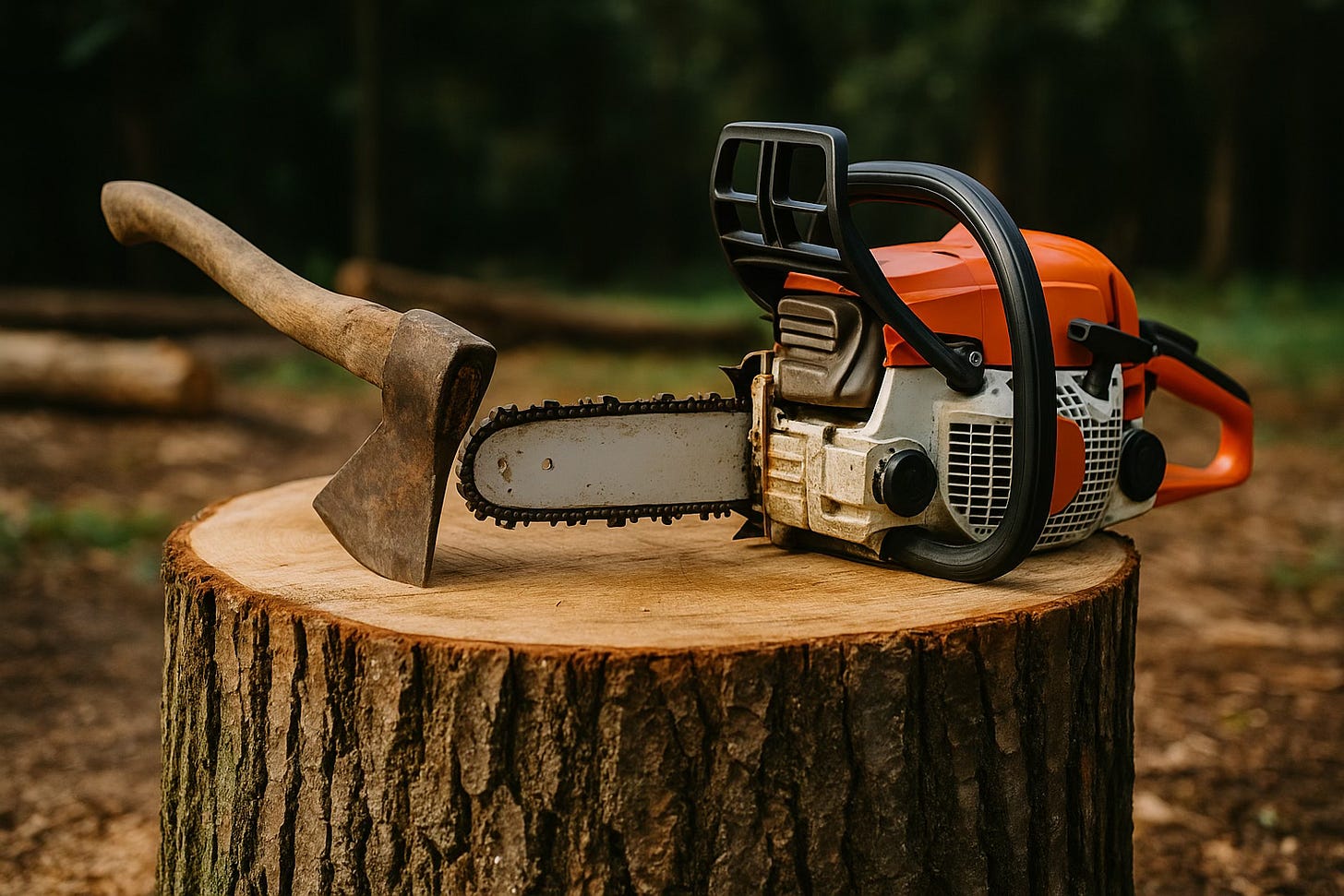AI has sparked some lively debates among writers and artists about whether it’s killing creativity, whether it’s taking over, or whether it can create anything worthwhile without us. Maybe one day it will. But we’re not there yet, not by a long chalk.
That thought came to me today while walking by the river. A crew of tree surgeons were taking down a few old trees that must’ve been judged dangerous. Their primary tool, of course, was the chainsaw. Once upon a time, it would’ve been an axe. Even a skilled worker with a sharp axe would have taken hours to bring down what a chainsaw now manages in minutes.
It always saddens me to see a tree felled, all those decades of silent growth gone in a moment, but what struck me this time was the contrast between the axe and the chainsaw. Would any tree surgeon today go back to the axe, simply because that’s how it used to be done? Of course not. So why, as writers, do some of us hesitate to use the new tools available to us?
The pen, if you like, is the axe. AI is the chainsaw.
But let’s take the image further. Imagine a sculptor who works in wood. Those once-proud trees, now reduced to logs, can still be transformed into something beautiful. There’s a man near here who carves with a chainsaw. His creations are impressive in their way, bold, dramatic, but you can tell at a glance that they were made with a chainsaw. They’re powerful, not delicate.
Now think of another sculptor. He wants to create something finer: an eagle poised on a branch, wings half-spread. That’s not a job for a chainsaw. But it’s not a job for a tiny chisel either, not at the start. He begins by shaping the rough form with power tools or even a smaller chainsaw, before moving on to chisels and files. Only when the shape begins to emerge does he start to refine, polish, and bring the eagle to life.
As writers, I think our process is much the same. The raw log is our idea, and AI can help us rough it out, trim the excess, shape the form, find a starting point. But only we can bring the final sculpture to life. Only we can run our hands over the grain, sense what it’s becoming, and carve the details that turn it into something truly human.
Yet, as with so many things these days, the debate seems to polarise. It’s black or white, left or right, AI or pen, screen or notebook. I’ve never found those extremes useful. The middle way makes more sense to me. Use the best of what’s available. Adapt the tools to your purpose, not the other way around.
Some people will always choose the axe. They have the skill, the patience, and the sheer stamina to work from start to finish by hand. Good luck to them. But most of us don’t. For many, the hardest part is getting started, the first swing of the axe, the first cut into the log. AI can give us a head start. It can clear the way for the work that really matters: the part where thought, care, and individuality come in.
If the choice is between no writing at all, or writing that begins with a little mechanical help and ends with human craft, I know which I’d pick.
AI isn’t the artist. It’s just a saw, no more, no less. It can cut, but it can’t care. The vision, the touch, the meaning, all of that still depends on us.
Tools change. What doesn’t change is the need to make something worth making.



Well said! Great analogy, too. Yes, use the “power tool” but don’t let it shape the final product. 👍